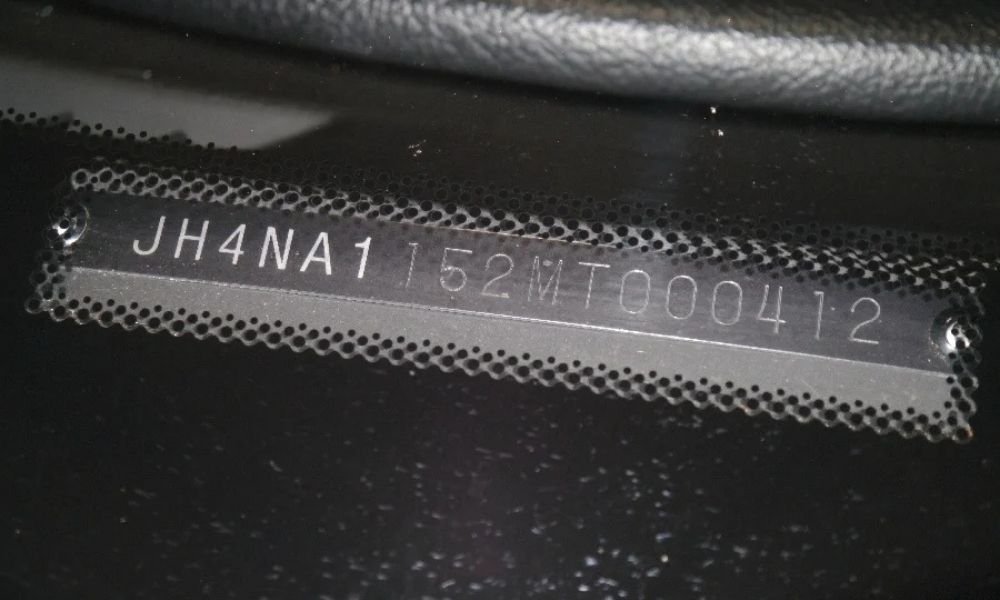What is a Vehicle Identification Number (VIN)?
Every car in the world has a special code that sets it apart from all others. This code is called the vehicle VIN number. It’s a unique 17-character sequence that’s permanently attached to the car, usually stamped into its frame. Think of it as the car’s fingerprint—no two vehicles share the same one.
Unlike registration plates or other numbers that can be changed or swapped, the VIN stays with the car for its entire life. It’s given at the factory when the car is made, and it tells a story about where the car came from and what kind it is. For example, the first few characters reveal the country and the manufacturer, like a secret code saying, “This car is from Germany, made by Audi.”
Knowing the vehicle VIN number is important, especially when you’re buying or selling a car. It helps you check the car’s history and make sure everything is honest and clear. This is why people often use
car reg checks—to verify that the vehicle’s identity matches all the paperwork.
Breaking Down the VIN Number: What Each Character Means?
A VIN number isn’t just a random string of letters and numbers. Every character in the 17-digit code tells a part of the car’s story, from where it was built to what kind of engine it has.
The very first character shows the country where the vehicle was made. The next two characters tell you who made the car—the manufacturer. Together, these three letters give a quick snapshot of the car’s origin.
Moving on, the 4th through the 8th characters describe the car itself, like its brand style, engine size, and type. For example, some flexible fuel vehicles can be identified by these specific spots in the VIN.
The 9th character acts as a security check, making sure the VIN is genuine and approved by the car maker. Then, the 10th character reveals the model year, helping you know how old the vehicle really is.
The 11th character tells you which factory assembled the car, and finally, the last six characters make up the serial number, which is unique to every single car made.
Understanding the VIN number meaning gives you the power to decode important details about a vehicle, making it easier to trust the history and identity of the car you’re interested in.
Why It’s Important to Check the Vehicle Identification Number Before Buying a Car?
Before buying a used car, checking the Vehicle Identification Number is one of the smartest things you can do. The VIN is like the car’s official ID—it proves who the car really is.
Car makers and registration agencies keep big databases with all these numbers. By entering the VIN, they can confirm if the car’s details match the records.
If you’re unsure, using car reg checks can reveal if something’s wrong, like a stolen or cloned vehicle. If anything looks suspicious, it’s better to walk away and stay safe.
Where to find vin number on car?
If you want to find a car’s VIN, start by looking at the chassis number on car parts. The VIN is usually stamped directly into the chassis, often in the engine bay or under the plastic trim around the driver’s or passenger’s door frame.
Many cars also have the VIN displayed in other spots. In the UK, for example, you can often see the VIN near the bottom of the windscreen. This visible VIN helps police and buyers quickly check a car’s identity without opening the doors.
Sometimes, the VIN is also on metal plates with other car info, making it easy to spot.
Other Places to Look for a Car’s VIN
Besides the car itself, you can find the vin number car in several important documents. Check your insurance card or policy, as the VIN is usually listed there. It’s also on the vehicle’s title and registration papers—these official documents help prove ownership.
If you want to learn more about a car’s history, My Car Reg Check offers free VIN checks. By entering the VIN in the search box above, you can see basic info like the car’s make, model, year, and where it was built. We also tell you how many history records exist for that vehicle, giving you a glimpse of its past before you buy or sell.
When Should You Check VIN Number UK?
If you’re thinking about buying a used car, one of the first things you should do is check the real car vin number. It’s important to make sure the VIN on the V5 registration document matches the number stamped on the car’s chassis.
Also, look for any other plates on the car showing the VIN and confirm they all match. This helps protect you from buying a car with a fake or tampered identity. Plus, manufacturers use the VIN to notify owners about recalls, so it’s good to verify it early on.
What to Do If the VIN Doesn’t Match the Log Book?
If the VIN on the car doesn’t match the one on the registration document, it’s a clear warning sign—don’t buy that car. Something isn’t right.
Sometimes, dishonest people take the VIN from a legal car and put it on a stolen one. This is called VIN cloning, and it’s illegal. They may even create fake documents to hide the stolen car’s true identity.
There are also dangerous cases called ‘cut and shut’ cars, where parts from two different cars are joined together, sometimes carrying more than one VIN. This makes the car unsafe and illegal to drive.
The whole point of the VIN system is to be foolproof and clear. There should never be any doubt about a car’s identity. If you spot mismatches or feel unsure, it’s best to walk away and avoid any risks.
VIN vs. Chassis Number vs. Engine Number – What’s the Difference?
Sometimes, people get confused between a car’s VIN and its chassis number, but they’re actually the same thing. The VIN, or Vehicle Identification Number, is stamped directly onto the chassis, which is the car’s main frame. This number is unique to that car and stays with it for life.
On the other hand, the engine number is different. Engines aren’t fixed parts—they can be swapped or replaced if needed. That’s why every car has its own engine number as well, which tells you about the engine’s size and power.
This system makes sense because if the engine breaks down or is replaced, the car doesn’t lose its identity. It just gets a new engine number while keeping the original chassis number. That way, the car can keep running without losing its history.
Is Your VIN the Correct Length? What If It's Not 17 Characters?
The standard VIN is 17 characters long, but if your VIN is shorter, don’t panic. First, make sure you’ve copied it correctly. If it’s definitely less than 17 characters, it probably belongs to a car made before 1981.
Before 1981, VINs weren’t standardised, so they could be anywhere from 11 to 17 characters long. Because of this, modern VIN check services may not have full information on these older vehicles, making it harder to get a complete history.
VIN Number FAQs
What is the History of VIN Number?
VINs were created to give every vehicle a unique identity. Before 1981, there wasn’t a standard format, so VINs varied in length and style. In 1981, a universal 17-character system was introduced to help track vehicles better and prevent fraud.
What are the Different Formats of VIN Number?
Today, VINs are always 17 characters long, mixing letters and numbers. Before 1981, VINs could be anywhere from 11 to 17 characters. These older formats were less consistent, making it harder to identify cars quickly and accurately.
What does a car VIN number tell you?
A car’s VIN number reveals important details like the manufacturer, where the car was made, its model year, engine type, and unique serial number. It’s like the car’s personal ID, helping track its history, recalls, and ownership so you can know exactly what you’re dealing with.
Is the V5 number the same as the VIN number?
No, the V5 number is different. It’s the registration document number that shows who owns the car. The VIN is stamped on the car itself and identifies the vehicle’s unique build and history. The V5 uses the VIN but they aren’t the same thing.



